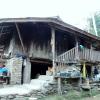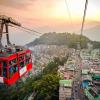Sikkim is an Indian state located in the northeastern part of India. The capital of Sikkim is Gangtok. This is the second smallest state in India next only to Goa and is the least populous state in the country. The name Sikkim means Goodly Region or a Fortified Place. The state has 11 official languages including Nepali. Agriculture and tourism are the main activities here.
History of Sikkim
The rule of Chogyal dynasty started in Sikkim in 1642 and at that time, Yuksom and then Rabdentse served as the capital city. Sikkim has to face the invasion of Bhutan and Nepal often in 18th century. China supported Sikkim and exercised control over the region. In 1890, Sikkim was made as a British protectorate.
After the independence of India, Sikkim joined the Indian Union with a special protectorate status. In 1955, a state council was established under Chogyal, however the riots in 1973 made the then Prime Minister of Sikkim appeal to the Indian Government for protecting it and to make it as a state of India. Thus on 16th May 1975, Sikkim was made as the 22nd state of India. Sikkim is the only open land border between India and China and so there is a permanent army base station there.
Geography and Climate of Sikkim
Sikkim spreads over an area of 7,096 square kilometers and has Nepal in the west, China in the north and east, Bhutan in the southeast and West Bengal in the south. Most of the parts of Sikkim are covered by Himalayas. The third highest peak of the world Kangchenjunga is located in its border. One third of the land is covered by thick forests.
There are 28 mountain peaks and more than 80 glaciers in Sikkim. There are also 227 lakes and five hot springs namely Yumthangt, Borang, Ralang, Taram-Chu and Yumey Samdong. Sikkim is connected to Tibet, Bhutan and Nepal by eight mountain passes.
The climate of Sikkim is sub-tropical in the south and tundra in the north. The northern parts are snow-laden for four months in a year and the temperature goes below 0 degree Celsius. The maximum temperature in summer in Sikkim is 28 degree Celsius. In winter the temperature reaches even up to - 40 degree Celsius. The average annual temperature of Sikkim is 18 degree Celsius. Landslides are caused during monsoon seasons.
Natural Resources of Sikkim
Sikkim is one of the three ecoregions of India. It has more than 5000 species of flowering plants, 11 oak varieties and 23 varieties of bamboo. Sal, orchids, figs, laurel and banana trees grow in the regions of lower altitude. Oaks, maples, birches, juniper, pine, firs and chestnuts are also grown here.
Some of the fauna of Sikkim include snow leopard, Himalayan black bear, red panda, marmot, serow, goral, barking deer, golden eagles, quail, plovers, woodcock, sandpipers, pigeons, marbled cat, leopard cat, wild dog, yaks, etc.
Districts of Sikkim
For administrative purposes, Sikkim is divided into four districts and these are again divided into subdivisions as of June 2012. Given below is the Sikkim state map with all 4 districts marked.

List of Districts of Sikkim
The district collector is appointed for the administration of each district. The districts, their headquarters and the subdivisions are given below.
|
Districts |
Headquarters |
Subdivisions |
|
Pakyong, Rongli |
||
|
Geyzing |
Soreng |
|
|
Chungthang |
||
|
Ravongla |
People and Culture of Sikkim
Being India’s least populous and least densely populated state, Sikkim has only 607,688 people with a density of 86 people per square kilometer as of 2011. The sex ratio of Sikkim is 889 females for every 1000 males. There are 11 official languages in Sikkim namely Nepali, Bhutia, Lepcha, Limbu, Newari, Rai, Gurung, Mangar, Sherpa, Tamang and Sunwar.
Hinduism and Buddhism are the two main religions prevailing here. Christians, Jains and Muslims also live in negligible quantities. All major Hindu festivals including Diwali and Dussera are celebrated here. Christmas, Eid Ul Fitr, Eid Ul Alha and Muharram are also celebrated. Buddhist people celebrate festivals like Losar, Loosong, Saga Dawa, Drupka Teshi, Bhumchu and Lhabab Duechen.
Football, cricket, river rafting and hang gliding are the popular sports of Sikkim. Some of the common dishes in Sikkim cuisine are thukpa, thanthuk, fakthu, gyathuk, wonton and chowmein. Sikkim ranks third in India in its per capita alcoholism rate after Punjab and Haryana.
Education in Sikkim
The literacy rate of Sikkim is 76.6%. There are 1157 schools in the state and among them 765 are run by the state government, seven by the central government and 385 by the private institutions. There are also twelve colleges and two state polytechnic institutions here. Some of the popular educational institutions are Sikkim Manipal University of Technological Sciences, Advanced Technical Training Center and Center for Computers and Communication Technology.
Economy of Sikkim
The nominal SGDP of Sikkim in 2010 was at 730 million dollars. However the state has one of the highest per capita incomes in the country with 11,356 INR. The economy is based on its agricultural output and some of the crops grown here are maize, millet, wheat, barley, tea and oranges. Sikkim is the largest producer of cardamom in India. Gambling industry is promoted by the state. The minerals like copper, dolomite, graphite, quartzite, coal, zinc and lead are mined here. Other major industries are brewing, tanning, distilling and watch making, etc.
Sikkim Transportation
Transportation in Sikkim is not very smooth due to its rough terrain. There are no airports here and the closest airport is Bagdogra Airport in West Bengal. There is a helipad in Gangtok. Also there is no significant railway track running through this state. The government is planning to improve its railway infrastructure. NH 31A and NH 31 pass through Sikkim. They connect Gangtok with Siliguri. Sikkim is connected with Tibet through the mountain pass of Nathu La.
Sikkim Tourism
Though tourism is one of the major industries of the state, it is a restricted activity due to cross border tensions. The foreigner who wants to enter Sikkim should get Inner Line Permit which can be collected at the entry point at Rangpo. Some of the places of interest in Sikkim are as follows:
1. Aritar Lake
2. Bakthang Waterfalls
3. Ban Jhakri Falls
4. Buddha Park
5. Chogyal Park
6. Fambong Lho Wildlife Sanctuary
7. Gangtok Ropeway
8. Gonjang Monastery
9. Gurudongmar Lake
10. Himalayan Zoological Park
11. Menmecho Lake
12. Namchi Rock Garden































